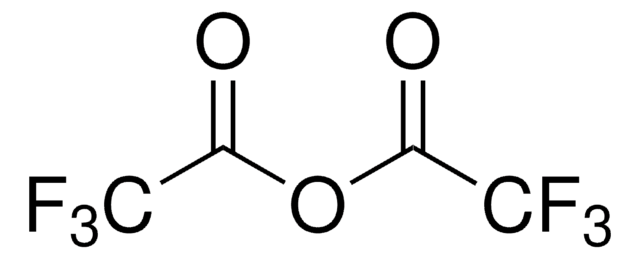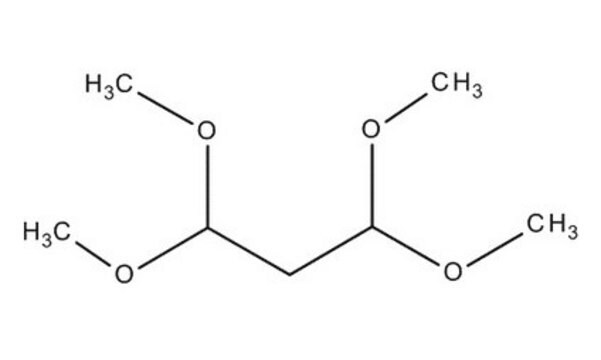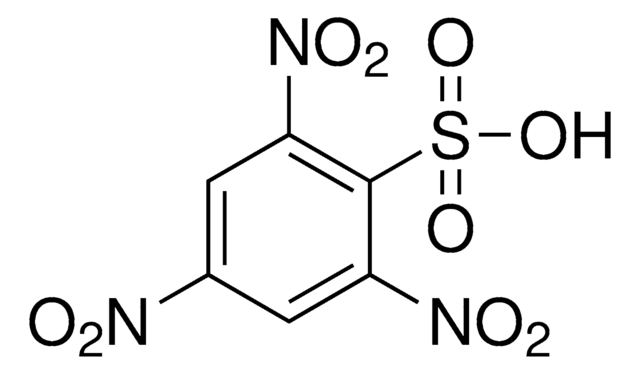17-10099
ChIPAb+ Acetyl-Histone H4 (Lys8) - ChIP Validated Antibody and Primer Set
serum, from rabbit
Sinónimos:
H4K8Ac, Histone H4 (acetyl K8)
Iniciar sesiónpara Ver la Fijación de precios por contrato y de la organización
About This Item
UNSPSC Code:
12352203
eCl@ss:
32160702
NACRES:
NA.75
Productos recomendados
biological source
rabbit
Quality Level
antibody form
serum
clone
polyclonal
species reactivity
human, yeast, Saccharomyces cerevisiae
manufacturer/tradename
ChIPAb+
Upstate®
technique(s)
ChIP: suitable
immunoprecipitation (IP): suitable
western blot: suitable
NCBI accession no.
UniProt accession no.
shipped in
dry ice
General description
All ChIPAb+ antibodies are individually validated for chromatin precipitation, every lot, every time. Each ChIPAb+ antibody set includes control primers (tested every lot by qPCR) to biologically validate your IP results in a locus-specific context. The qPCR protocol and primer sequences are provided, allowing researchers to validate ChIP protocols when using our antibody in their chromatin context. Each set also includes a negative control antibody to ensure specificity of the ChIP reaction.
The ChIPAb+ Acetyl-Histone H4 (Lys8) set includes the Acetyl-Histone H4 (Lys8) antibody, a negative control rabbit serum, and qPCR primers which amplify a 134 bp region of human HSPCA. The Acetyl-Histone H4 (Lys8) and negative controls are supplied in a scalable "per ChIP" reaction size and can be used to functionally validate the precipitation of Acetyl-Histone H4 (Lys8)-associated chromatin.
The ChIPAb+ Acetyl-Histone H4 (Lys8) set includes the Acetyl-Histone H4 (Lys8) antibody, a negative control rabbit serum, and qPCR primers which amplify a 134 bp region of human HSPCA. The Acetyl-Histone H4 (Lys8) and negative controls are supplied in a scalable "per ChIP" reaction size and can be used to functionally validate the precipitation of Acetyl-Histone H4 (Lys8)-associated chromatin.
Histone H4 is one of the 5 main histone proteins involved in the structure of chromatin in eukaryotic cells. Featuring a main globular domain and a long N terminal tail H4 is involved with the structure of the nucleosomes of the ′beads on a string′ structure.
The N-terminal tail of histone H4 protrudes from the globular nucleosome core and can undergo several different types of epigenetic modifications that influence cellular processes. These modifications include the covalent attachment of methyl or acetyl groups to lysine and arginine amino acids and the phosphorylation of serine or threonine.
The N-terminal tail of histone H4 protrudes from the globular nucleosome core and can undergo several different types of epigenetic modifications that influence cellular processes. These modifications include the covalent attachment of methyl or acetyl groups to lysine and arginine amino acids and the phosphorylation of serine or threonine.
Specificity
Broad species cross-reactivity is expected based on 100% sequence homology.
Recognizes acetyl-Histone H4 (Lys8).
Immunogen
Synthetic peptide corresponding to yeast Histone H4 acetylated at lysine 8.
Application
Chromatin Immunoprecipitation:
Sonicated chromatin prepared from HeLa cells (1 X 106 cell equivalents per IP) were subjected to chromatin immunoprecipitation using either 2 µL of Normal Rabbit Serum or 2 µL of Anti-Acetyl-Histone H4 (Lys8) and the Magna ChIP A Kit (Cat. # 17-610).
Successful immunoprecipitation of Acetyl-Histone H4 (Lys8) associated DNA fragments was verified by qPCR using ChIP Primers, human HSPCA for a positive, and known Negative Primers (Martinato, F., et al., 2008) as a negative assay (Please see figures).
Data is presented as percent input of each IP sample relative to input chromatin for each amplicon and ChIP sample as indicated.
Please refer to the EZ-Magna ChIP A (Cat. # 17-408) or EZ-ChIP (Cat. # 17-371) protocol for experimental details.
Western Blot Analysis:
Representative lot data.
Sodium Butyrate-treated HeLa acid extract was resolved by electrophoresis, transferred to PVDF membrane and probed with Anti-Acetyl Histone H4 (Lys8) (1:1000 dilution). To demonstrate specificity, serum was preincubated with modified Histone H4 peptides:
Lane 1: No peptide
Lane 2: acetyl-Histone H4 (K5) (Cat.#:12-343)
Lane 3: acetyl-Histone H4 (K8) (Cat.#:12-344)
Lane 4: acetyl-Histone H4 (K12) (Cat.#:12-345)
Lane 5: acetyl-Histone H4 (K16) (Cat.#:12-346)
Lane 6: acetyl-Histone H4 (K5, 8, 12, 16) (Cat.#:12-353)
Lane 7: Histone H4 (Cat.#:12-347)
Proteins were visualized using a donkey anti-rabbit IgG conjugated to HRP and visualized using a chemiluminescence detection system (Please see figures).
Immunoprecipitation: 5 μL of a previous lot immunoprecipitated acetyl Histone H4 from 1 mg of wild type whole cell yeast lysates but not from a yeast strain containing a Histone H4 Lys8R substitution.
Sonicated chromatin prepared from HeLa cells (1 X 106 cell equivalents per IP) were subjected to chromatin immunoprecipitation using either 2 µL of Normal Rabbit Serum or 2 µL of Anti-Acetyl-Histone H4 (Lys8) and the Magna ChIP A Kit (Cat. # 17-610).
Successful immunoprecipitation of Acetyl-Histone H4 (Lys8) associated DNA fragments was verified by qPCR using ChIP Primers, human HSPCA for a positive, and known Negative Primers (Martinato, F., et al., 2008) as a negative assay (Please see figures).
Data is presented as percent input of each IP sample relative to input chromatin for each amplicon and ChIP sample as indicated.
Please refer to the EZ-Magna ChIP A (Cat. # 17-408) or EZ-ChIP (Cat. # 17-371) protocol for experimental details.
Western Blot Analysis:
Representative lot data.
Sodium Butyrate-treated HeLa acid extract was resolved by electrophoresis, transferred to PVDF membrane and probed with Anti-Acetyl Histone H4 (Lys8) (1:1000 dilution). To demonstrate specificity, serum was preincubated with modified Histone H4 peptides:
Lane 1: No peptide
Lane 2: acetyl-Histone H4 (K5) (Cat.#:12-343)
Lane 3: acetyl-Histone H4 (K8) (Cat.#:12-344)
Lane 4: acetyl-Histone H4 (K12) (Cat.#:12-345)
Lane 5: acetyl-Histone H4 (K16) (Cat.#:12-346)
Lane 6: acetyl-Histone H4 (K5, 8, 12, 16) (Cat.#:12-353)
Lane 7: Histone H4 (Cat.#:12-347)
Proteins were visualized using a donkey anti-rabbit IgG conjugated to HRP and visualized using a chemiluminescence detection system (Please see figures).
Immunoprecipitation: 5 μL of a previous lot immunoprecipitated acetyl Histone H4 from 1 mg of wild type whole cell yeast lysates but not from a yeast strain containing a Histone H4 Lys8R substitution.
Research Category
Epigenetics & Nuclear Function
Epigenetics & Nuclear Function
Research Sub Category
Histones
Histones
The ChIPAb+ Acetyl-Histone H4 (Lys8) set includes the Acetyl-Histone H4 (Lys8) antibody, a negative control rabbit serum & qPCR primers which amplify a 134 bp region of human HSPCA.
Packaging
25 assays per set. Recommended use: ~2 μL of antibody per chromatin immunoprecipitation (dependent upon biological context).
Quality
Chromatin Immunoprecipitation:
Sonicated chromatin prepared from HeLa cells (1 X 106 cell equivalents per IP) were subjected to chromatin immunoprecipitation using either 2 µL of Normal Rabbit Serum or 2 µL of Anti-Acetyl-Histone H4 (Lys8) and the Magna ChIP® A Kit (Cat. # 17-610).
Successful immunoprecipitation of Acetyl-Histone H4 (Lys8) associated DNA fragments was verified by qPCR using ChIP Primers, human HSPCA (Please see figures).
Please refer to the EZ-Magna ChIP A (Cat. # 17-408) or EZ-ChIP (Cat. # 17-371) protocol for experimental details.
Sonicated chromatin prepared from HeLa cells (1 X 106 cell equivalents per IP) were subjected to chromatin immunoprecipitation using either 2 µL of Normal Rabbit Serum or 2 µL of Anti-Acetyl-Histone H4 (Lys8) and the Magna ChIP® A Kit (Cat. # 17-610).
Successful immunoprecipitation of Acetyl-Histone H4 (Lys8) associated DNA fragments was verified by qPCR using ChIP Primers, human HSPCA (Please see figures).
Please refer to the EZ-Magna ChIP A (Cat. # 17-408) or EZ-ChIP (Cat. # 17-371) protocol for experimental details.
Target description
~11 kDa
Physical form
Anti-Acetyl-Histone H4 (Lys8) (rabbit polyclonal). One vial containing 50 μL of antiserum containing 0.05% sodium azide. Store at -20°C.
Normal Rabbit Serum. One vial containing 100 μL of antiserum containing 0.05% sodium azide.
Store at -20°C.
ChIP Primers, HSPCA. One vial containing 75 μL of 5 μM of each primer specific for human HSPCA.
Store at -20°C.
FOR: GCA ACA GCT ACC ACA GGA CCA
REV: GAG CGT GTG AAA TCA ACA TAA AGC
Normal Rabbit Serum. One vial containing 100 μL of antiserum containing 0.05% sodium azide.
Store at -20°C.
ChIP Primers, HSPCA. One vial containing 75 μL of 5 μM of each primer specific for human HSPCA.
Store at -20°C.
FOR: GCA ACA GCT ACC ACA GGA CCA
REV: GAG CGT GTG AAA TCA ACA TAA AGC
Unpurified
Storage and Stability
Stable for 1 year at -20°C from date of receipt. Handling Recommendations: Upon first thaw, and prior to removing the cap, centrifuge the vial and gently mix the solution. Aliquot into microcentrifuge tubes and store at -20°C. Avoid repeated freeze/thaw cycles, which may damage IgG and affect product performance.
Analysis Note
Control
Includes negative control normal rabbit serum antibody and primers specific for human HSPCA.
Includes negative control normal rabbit serum antibody and primers specific for human HSPCA.
Legal Information
MAGNA CHIP is a registered trademark of Merck KGaA, Darmstadt, Germany
UPSTATE is a registered trademark of Merck KGaA, Darmstadt, Germany
Disclaimer
Unless otherwise stated in our catalog or other company documentation accompanying the product(s), our products are intended for research use only and are not to be used for any other purpose, which includes but is not limited to, unauthorized commercial uses, in vitro diagnostic uses, ex vivo or in vivo therapeutic uses or any type of consumption or application to humans or animals.
Storage Class
10 - Combustible liquids
Certificados de análisis (COA)
Busque Certificados de análisis (COA) introduciendo el número de lote del producto. Los números de lote se encuentran en la etiqueta del producto después de las palabras «Lot» o «Batch»
¿Ya tiene este producto?
Encuentre la documentación para los productos que ha comprado recientemente en la Biblioteca de documentos.
Marcin Cieślik et al.
Epigenetics & chromatin, 6(1), 28-28 (2013-09-06)
The epithelial-mesenchymal transition (EMT) is a de-differentiation process required for wound healing and development. In tumors of epithelial origin aberrant induction of EMT contributes to cancer progression and metastasis. Studies have begun to implicate epigenetic reprogramming in EMT; however, the
Manti Guha et al.
PloS one, 13(11), e0206897-e0206897 (2018-11-15)
Telomeres protect against chromosomal damage. Accelerated telomere loss has been associated with premature aging syndromes such as Werner's syndrome and Dyskeratosis Congenita, while, progressive telomere loss activates a DNA damage response leading to chromosomal instability, typically observed in cancer cells
Nuestro equipo de científicos tiene experiencia en todas las áreas de investigación: Ciencias de la vida, Ciencia de los materiales, Síntesis química, Cromatografía, Analítica y muchas otras.
Póngase en contacto con el Servicio técnico







